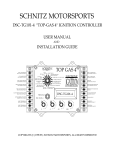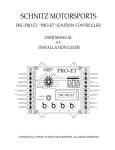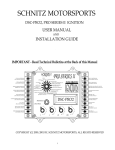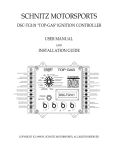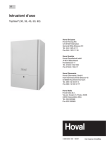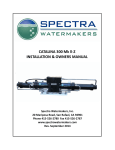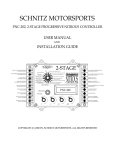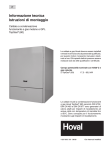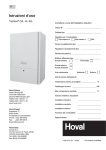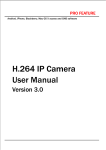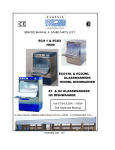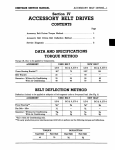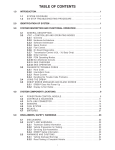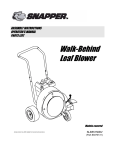Download Top-Elimnator Manual
Transcript
SCHNITZ MOTORSPORTS DSC-TE2000, TOPGAS-2000 - TOP ELIMINATOR IGNITION USER MANUAL AND INSTALLATION GUIDE TOPGAS-2000 TOP ELIMINATOR SCHNITZ MOTORSPORTS COIL 1,4 (OPTIONAL) 16GA YELLOW, PAGE 18 10 COIL 1,4 NEGATIVE 16GA WHITE, PAGE 18 11 TIMER OUTPUT (GROUND) RECOMMEND 16GA , PAGE 21 12 NOS SOLENOID (GROUND) 16GA ORANGE, PAGE 20 13 ACTIVATION INPUT 20GA ORANGE, PAGE 20 14 CLUTCH SWITCH INPUT (2-STEP) 20GA YELLOW, PAGE 20 15 SHIFT INPUT 20GA GRAY, PAGE 22 16 SHIFT LIGHT (GROUND) 20GA BROWN, PAGE 22 SHIFT SOLENOID (GROUND) 20GA GREEN, PAGE 22 17 RUN OR VOLTS SHIFT RPM HIGH ENGINE RPM AND RPM DIAGNOSTICS LAUNCH TIMER DELAY IN SECONDS RPM SHIFT STYLE & SHIFT COUNTER TIMER DURATION ENGINE KILL TIME NOS DELAY TIME IN SECONDS NOS START PERCENT BUILD RETARD RETARD BUILD IGNITION CONTROLLER NOS FINAL PERCENT TIME IN SECONDS ELECTRONIC INITIAL NOS BUILD TIME RETARD IN SECONDS DSC-TE2000 PROGRAM DSC-TE2000 0 1 2 3 18 1 9 8 4 5 6 7 0 1 2 3 .1 9 8 4 5 6 7 0 1 2 3 .01 9 8 4 5 6 7 0 1 2 3 .001 9 8 4 5 6 7 9 COIL 2,3 (OPTIONAL) 16GA PURPLE, PAGE 18 8 COIL 2,3 NEGATIVE 16GA BLUE, PAGE 18 7 GROUND 14GA BLACK, PAGE 18 6 TRIGGER (GROUND) 20GA BLACK, PAGE 18 5 TRIGGER +12V 20GA RED, PAGE 18 4 +12 VOLTS SWITCHED 16GA RED, PAGE 18 3 TACH OUTPUT 2 TRIGGER 2,3 20GA BLUE, PAGE 18 1 TRIGGER 1,4 20GA WHITE, PAGE 18 COPYRIGHT (C) 1998 BY, SCHNITZ MOTORSPORTS, ALL RIGHTS RESERVED Important Application Information IMPORTANT Stock Crankshaft Trigger will NOT work with this Controller. Use only DYNA (S) ® or DYNA PRO SERIES ® Trigger. Use only a Dual Magnet Rotor for Crankshaft Trigger. Use only .7ohm High Energy (Blue) Ignition Coils. Part #DC9-1, DC9-2 Use only Static Suppression Spark-plug Wires. Part #DW-800 All items listed above are available from Schnitz Racing. 1-219-728-9730 Notice of Copyright Copyright (C) 1998 Schnitz Motorsports, Decatur, Indiana. All rights reserved. Copyright law protects this document. It is unlawful to make copies, modify, or distribute without written consent from Schnitz Motorsports. It is the responsibility of the purchaser to follow all guidelines and safety procedures supplied with this product and any other manufactures product used with this product. It is also the responsibility of the purchaser to determine compatibility of this device with the vehicle and other components. Schnitz Motorsports assumes no responsibility for damages resulting from accident, improper installation, misuse, abuse, improper operation, lack of reasonable care, or all previously stated reasons due to incompatibility with other manufacturer's products. Schnitz Motorsports assumes no responsibility or liability for damages incurred from the use of products manufactured or sold by Schnitz Motorsports on vehicles used for competition racing. Schnitz Motorsports neither recommends nor approves the use of products manufactured or sold by Schnitz Motorsports on vehicles which may be driven on public highways or roads, and assumes no responsibility for damages incurred from such use. It is the purchaser’s responsibility to check the state and local laws pertaining to the use of Nitrous Oxide for racing applications. Schnitz Motorsports does not recommend nor condone the use of its products for illegal street racing. Caution Follow all recommended safety guidelines from this and other manufacturer installation guidelines. Never install any device, which pulsates nitrous solenoids without a safety solenoid installed. Static suppression ignition wires must be used with this unit! Mount the Ignition Controller as far away from secondary ignition components (ignition coils, ignition wires, etc.) As is physically possible. Installation of Schnitz Motorsports products signifies that you have read this document and agree to the terms stated within. Page 2 TopGas-2000 & Top Eliminator Overview Description: The TopGas-2000 Ignition Controller is a highly integrated Digital Ignition System with innovative features that enable today’s racing technology to be utilized to its maximum potential. The system was designed to be simple while maintaining focus on features. This design technique has led to a controller that can be installed in hours not days, provided other operational systems have already been installed or are existing on the motorcycle. Features: A - Ignition System 1 - The controller uses digital circuitry to precisely monitor and control the Inductive Type ignition drivers. This design enables precise and consistent ignition timing control from High Energy Ignition Coils. The High-Energy design ensures ignition performance for today’s technology. 2 – Ignition Timing Control is integrated into the controller. There are two stages and types of timing retard available. The first stage or Initial Retard can range from 0 to 12 degrees. This stage is activated immediately when the Progressive Nitrous Timer System is activated. The second stage was designed with a progressive timer that applies timing control over a period of time. This stage is activated when the Nitrous Delay Timer times out. The second stage of retard can range from 0 to 22 degrees and the Progressive Retard Timer can be programmed from .200 to 9.000 seconds. IMPORTANT – The first and second stages of retard are added together when used together. Example: 1st stage at 4 degrees and 2nd stage at 12 degrees would provide a total of 16 degrees of timing retard. B – Features based on Engine RPM Control 1 – High RPM, This selection enables the user to program an Upper RPM Limit for the engine. Valid RPM Range is from 3,000 to 16,000 RPM in 100-RPM Increments. 2 – Launch RPM, This selection enables the user to program the RPM at which the engine and/or motorcycle leave starting line with. Applying +12V signal activates this stage of RPM control. Valid RPM Range is from 3,000 to 16,000 RPM in 100-RPM Increments. 3 – Sequential Shift RPM, This selection enables the user to program the RPM at which the Shift Light Output becomes active and/or Auto Shifting can occur. A different RPM can Programmed for each gear, this is Sequential Shifting. The controller sequences through the User Programmed Shift Points. Shift Sequencing begins when the Auto-Shift Activation terminal is ON. The Shift Light Output is ON any time engine RPM is above the Shift RPM Setting, and OFF whenever engine RPM falls below the Shift RPM. The Auto-Shift System is very flexible and can be configured for all popular transmission styles. There is a 1-second delay timer built in for the 1-2 shift, this helps to control short shifts due to wheel spin off the line. A built-in and adjustable shift counter keeps track of gear position and engine kill requirements. The shift counter also stops false shifting in top gear position. The shift system can programmed for automatic or manual shifting. The rider can do a manual or Shift Override at any time, even while in auto mode. The shift counter is updated internally when manual shifts occur also. Page 3 C – Integrated Progressive Nitrous System and Programmable Digital Timer System 1 – The Progressive Nitrous System enables the user to adjust the NOS power curve for track and/or performance conditions. A – NOS Delay Timer, This selection enables the user to program a delay for the Start of NOS. The delay time can be set from 0.000 to 9.999 seconds. This delay Timer also determines when the 2nd stage of ignition timing retard begins. B – NOS Starting Percent, This selection determines the amount of NOS that is delivered to the engine at the start of Nitrous Injection. By lowering the amount of Nitrous introduced into the engine initially, traction problems can be controlled to match track conditions. Range is from 0% (OFF), 20% to 100% in 1% increments. C – NOS Final Percent, This selection determines the final amount of Nitrous that will be delivered to the engine. Range is from 0%(OFF), 20% to 100% in 1% increments. D – NOS Build Time, This selection allows the user to adjust the amount of time it takes the Nitrous to go from Start Power to Final Power. A short time setting will make the Nitrous Power Curve very aggressive. And a longer setting would make the power curve less aggressive. Power Build Time ranges from .200 to 9.900 seconds. E - NOS Minimum and Maximum Activation RPM, This allows user to set a RPM Range that the NOS is active in. These settings will shut off the NOS if the engine Bogs or is approaching the Rev Limiter 2 – The Programmable Digital Timer System provides a Time Controlled Output with adjustable duration (On Time). A – Timer Delay, This selection allows the user to program the delay time after activation that the timer Output Turns On. Adjustable Time range of 0.000 to 9.999 seconds. B – Timer Duration, This selection allows the user to program the amount of time the Time Output remains on. Adjustable Time range of 0.000 to 9.999 seconds. A setting of 0.000 Timer Duration turns the Timer Output OFF. C – An added feature to the Timer System is the ability to control an Ignition Stutter with the Timer Settings. Selecting it in the Diagnostics Menu enables this feature. When this feature is active the engine will Stagger Fire during the Timer Duration On Period. This allows a slow down of the motorcycle without external devices connected to the Timer Output. D – Diagnostics and Battery Voltage Monitor 1 – The Diagnostics Menu allows the user to perform various tests on activation circuits and ignition coil output. The Static or Base ignition timing must be set using Diagnostic Mode. When the engine is running the Diagnostic selection automatically becomes a Digital Tachometer. This can be used to check Actual Launch RPM and adjust the settings as needed. 2 – The Battery Voltage can be displayed when desired by the user. The voltage is +/- .1 volt accuracy. The voltage output can be re-calibrated if needed. Page 4 Table of Contents Important Information and Cautions Overview of Controller and Features Section 1, Setting Controller Parameters 1.0 – The Basics of Setting Controller Parameters 1.1 – Setting HIGH RPM, Upper RPM Limit 1.2 – Setting LAUNCH RPM 1.3 – Setting ENGINE KILL TIME for Air Shift Applications 1.4 – Setting SHIFT RPM, SHIFT STYLE & SHIFT COUNTER 1.5 – Setting Ignition Timing INITIAL RETARD, 1st Stage 1.6 – Setting Ignition Timing BUILD RETARD, 2nd Stage 1.7 – Setting RETARD BUILD TIME for 2nd Stage 1.8 – Setting TIMER DELAY 1.9 – Setting TIMER DURATION 1.10 – Turning TIMED IGNITION STUTTER OPTION ON/OFF 1.11 – Setting NOS DELAY TIME 1.12 – Setting NOS START PERCENT 1.13 – Setting NOS FINAL PERCENT 1.14 - Setting NOS BUILD TIME 1.15 - Setting NOS MINIMUM ACTIVATION RPM 1.16 - Setting NOS MAXIMUM ACTIVATION RPM 1.17 – Checking Battery Voltage Section 2, Diagnostics 2.0 – Description of Diagnostic Functions 2.1 – Ignition Coil Output Test 2.2 - Testing ACTIVATION Input 2.3– Testing CLUTCH Switch Input (Launch RPM Control) 2.4– Testing SHIFT Input 2.5– Turning the Timed Ignition Stutter Option On/Off 2.6 - Setting Ignition STATIC TIMING and Trigger Diagnostics 2.7 - Additional Information about Static Timing the Ignition 2.8 - Setting the TACH OUTPUT FREQUENCY 2.9 - Calibrating the VOLTAGE MONITOR 2.10 - Testing the SELECT and DATA Switches Section 3, Wiring Diagrams and Installation Instructions 3.0 – Overview and Important Installation Instructions 3.1 – Connecting the Ignition Components 3.2 – Special Instructions for 4 Coil Systems 3.3 – Connecting the Nitrous Oxide System 3.4 – Connecting to the Timer Output 3.5 - Connecting the Shift Light and Auto Shift Components 3.6 - Electrical Specifications Tech Tips 4.0- How to Run without NOS and/or AUTO-SHIFT 4.1 - Testing the Auto-Shift System and Some Tech Tips Warranty Information 5.0 – Warranty Page 2 Page 3, 4 Page 6 Page 7 Page 7 Page 7 Page 8 Page 9 Page 9 Page 9 Page 10 Page 10 Page 10 Page 11 Page 11 Page 11 Page 12 Page 12 Page 12 Page 12 Page 13 Page 13 Page 13 Page 13 Page 13 Page 14 Page 14 Page 15 Page 16 Page 16 Page 16 Page 17 Page 18 Page 19 Page 20 Page 21 Page 22 Page 23 Page 24 Page 24 Page 25 Page 5 1.0 - The Basics of Setting Controller Parameters 1 - Select Switch TOPGAS-2000 TOP ELIMINATOR SCHNITZ MOTORSPORTS RUN SHIFT RPM OR VOLTS HIGH RPM ENGINE RPM AND DIAGNOSTICS LAUNCH RPM TIMER DELAY IN SECONDS SHIFT STYLE & SHIFT COUNTER TIMER DURATION ENGINE KILL TIME NOS DELAY TIME IN SECONDS NOS START PERCENT BUILD RETARD INITIAL RETARD IGNITION CONTROLLER NOS FINAL PERCENT RETARD BUILD TIME IN SECONDS ELECTRONIC NOS BUILD TIME IN SECONDS DSC-TE2000 PROGRAM DSC-TE2000 0 1 2 3 1 9 8 4 5 6 7 0 1 2 3 .1 9 8 4 5 6 7 0 1 2 3 .01 9 8 4 5 6 7 0 1 2 3 .001 9 8 4 5 6 7 2 - Programming Switch 3 - Data Switches Switch Descriptions and Functions 1 - Switch #1 is the FUNCTION SELECT SWITCH, This switch is used to select which parameter is displayed and also selects that parameter for programming. 2 - Switch #2 is the PROGRAM SWITCH, When this switch is pressed down and held for 2-seconds the DATA switches will be read and the settings will be programmed into the controller. If an INVALID setting is read the controller will NOT save the setting and will display an INVALID message on the display. 3 - Data Switches #3 are for entering RPM Data, Ignition Retard Data, NOS Control Data, and for selecting various options as described in the following pages. Example Programming Sequence Function Select Switch(#1) set to HIGH RPM (Switch pointing to HIGH RPM) Data Switch 1 set at 1, .01 at 2, .001 at 5, .001 at 0 Data Switch 1 x 10,000 RPM Data Switch .1 x 1,000 RPM Data Switch .01 x 100 RPM Data Switch .001 is Ignored Pressing and holding PROGRAM Switch for 2-seconds will set the HIGH RPM at 12,500 RPM. Please refer to each of the following sections for setting all Functions. Page 6 1.1– Setting HIGH RPM, Upper RPM Limit Set SELECT Switch to HIGH RPM. Example that would set HIGH RPM at 10,400 1 set at 1 .1 set at 0 .01 set at 4 .001 set at 0 Press PROGRAM Button until the display reads PROGRAM. Release the button and the display will now read 10,400. HIGH RPM is now set at 10,400 RPM. Valid RPM range 3,000 to 16,000 RPM in 100-RPM Increments. Setting HIGH RPM to 0 will turn this function off. 1.2 - Setting LAUNCH RPM Set SELECT Switch to LAUNCH RPM. Example that would set LAUNCH RPM at 7,200 1 set at 0 .1 set at 7 .01 set at 2 .001 set at 0 Press PROGRAM Button until the display reads PROGRAM. Release the button and the display will now read 7,200. LAUNCH RPM is now set at 7,200 RPM. Valid RPM range 3,000 to 16,000 RPM in 100-RPM Increments. Setting LAUNCH RPM to 0 will turn this function off. 1.3 – Setting ENGINE KILL TIME Set SELECT Switch to ENGINE KILL TIME Example that would set ENGINE KILL TIME at 85 milliseconds 1 set at 0 .1 set at 0 .01 set at 8 .001 set at 5 Press the PROGRAM button until the display reads PROGRAM. Display will now read .085 and ENGINE KILL TIME is set at 85 milliseconds. Valid Time range .020 to .120 second in .001 increments. Page 7 1.4 – Setting SHIFT RPM, SHIFT STYLE & SHIFT COUNTER NOTE All Shift RPM’s MUST BE +/- 1,000 RPM of 1st Shift RPM! Set SELECT Switch to the SHIFT RPM this is the 1st Shift RPM When a NEW 1st Shift RPM is Programmed all Shift RPM’s will be set to the 1st Shift RPM Setting Automatically. Example that would set SHIFT RPM at 9,800 1 set at 0 .1 set at 9 .01 set at 8 .001 set at 0 Press PROGRAM Button until the display reads PROGRAM. Release the button and the display will now read 9,800. SHIFT LIGHT RPM is now set at 9,800 RPM. NOTE, IF the 1st Shift RPM is Programmed it will take a couple of Seconds to Update the Following Shift RPM’s. Valid RPM range 3,000 to 16,000 RPM in 100-RPM Increments. NOTE: Only the 1st SHIFT RPM will be used until the ACTIVATION Terminal is Activated.. This is done with a +12 volt signal. Please refer the next section for more information on the Auto-Shift System and its use. NOTE: Additional Shift RPM’s are set as follows. Set the SELECT Switch to SHIFT STYLE & SHIFT COUNTER Use the .001 DATA Switch to Select the Desired Shift RPM to Set. You must turn the .001 DATA Switch to #2 to #5 positions to access the Sequential Shift RPM Settings. The Display will show the which Shift Point you have selected. After Selecting the Desired Shift RPM, It can be Programmed by using the Additional DATA Switches as outlined above. The Auto-Shift is NOT activated until the Activation terminal is armed. Applying +12 volts to the terminal does this. At this time of activation a 1-second timer will begin, NO AUTO SHIFTS will occur until this 1second timer is done. This prevents sudden shifts due to wheel spin at the initial launch. A shift override may be activated at any time by applying +12V to the SHIFT Terminal. This is done with a shift button. A shift override will be counted by the AUTO-SHIFT shift counter. Ignition KILL for the shifts are controlled automatically by the controller. To use the SHIFT COUNTER with Manual shifting set the SHIFT STYLE as outline below. Auto Shift must be ACTIVATED for SHIFT COUNTER to work even when using MANUAL SHIFT Modes. SHIFT STYLE options are as follows: LITE No AUTO SHIFTING. Engine kill for all shifts. Manual Shift Only. 1-2 LITE No AUTO SHIFTING. Will NOT kill for 1-2 shift. Manual Shift Only. 1-2-3 LITE No AUTO SHIFTING. Will NOT kill for 1-2, 2-3 shifts. Manual Shift Only. AUTOLITE No AUTO SHIFTING. Will NOT kill for all shifts. Manual Shift Only. STANDARD AUTO SHIFT ON. Will kill for all gears. 1-2 AUTO AUTO SHIFT ON. Will NOT kill ignition for 1-2 shift. 1-2-3 AUTO AUTO SHIFT ON. Will NOT kill ignition for 1-2-3 shifts. FUL AUTO AUTO SHIFT ON. Will NOT kill ignition for all shifts. To change the SHIFT STYLE setting set the SELECT Switch to SHIFT STYLE & SHIFT COUNTER. Set the .001 DATA switch to 0. Pressing the PROGRAM button at this time will select the next option available. All option may be viewed by pressing the PROGRAM button repeatedly. SHIFT COUNTER options are as follows: 2-SPEED No Auto-Shifts after 1 to 2 shift. 3-SPEED No Auto-Shifts after 2 to 3 shift. 4-SPEED No Auto-Shifts after 3 to 4 shift. 5-SPEED No Auto-Shifts after 4 to 5 shift. 6-SPEED No Auto-Shifts after 5 to 6 shift. To change the SHIFT COUNTER setting set the SELECT Switch to SHIFT STYLE & SHIFT COUNTER. Set the .001 DATA switch to 1. Pressing the PROGRAM button at this time will select the next option available. All options may be viewed by pressing the PROGRAM button repeatedly. Page 8 1.5 – Setting Ignition Timing INITIAL RETARD, 1st Stage of Retard Note - Initial RETARD and Build RETARD Settings are Added together for Amount of Total Ignition Timing RETARD. Set SELECT Switch to INITIAL RETARD Example that would set INITIAL RETARD to 6 degrees 1 set at 0 (not used) .1 set at 0 (not used) .01 set at 0 .001 set at 6 Press PROGRAM button until the display reads PROGRAM. Display will now read 6 DEG and INITIAL RETARD is set to 6 degrees. Valid range 1 to 12 Degrees, 1Degree Increments. Setting to 0 will turn this function OFF. NOTE: This retard stage will turn on immediately when the NOS Activation is turned on. (+12volts applied). The ignition retard will remain active until the NOS system resets. 1.6 – Setting Ignition Timing BUILD RETARD, 2nd Stage of Retard Note - Initial RETARD and Build RETARD Settings are Added together for Amount of Total Ignition Timing RETARD. Set SELECT Switch to BUILD RETARD Example that would set BUILD RETARD to 14 degrees 1 set at 0 (not used) .1 set at 0 (not used) .01 set at 1 .001 set at 4 Press PROGRAM button until the display reads PROGRAM. Display will now read 14 DEG and BUILD RETARD is set to 14 degrees. Valid range 1 to 22 Degrees, 1 Degree Increments. Setting to 0 will turn this function OFF. NOTE: This retard stage will turn on when the NOS Delay Timer has timed out and the NOS Solenoids have been turned on. The retard will progressively come on based on the RETARD BUILD TIME setting. 1.7 – Setting RETARD BUILD TIME for 2nd Stage of Retard Set SELECT Switch to RETARD BUILD TIME IN SECONDS Example that would set RETARD BUILD TIME at 2.400 seconds 1 set at 2 .1 set at 4 .01 set at 0 (not used) .001 set at 0 (not used) Press PROGRAM button until the display reads PROGRAM. Display will now read 2.400 and RETARD BUILD TIME is set at 2.400 seconds. Valid Time Range .200 to 9.900 seconds, .1 second Increments. Note: This setting determines the Ramp of IGNITION TIMING RETARD. A low setting i.e. (.200) will make the TIMING RETARD very aggressive. A high setting i.e. (9.900) will make the TIMING RETARD gradual. Page 9 1.8 – Setting TIMER DELAY Set SELECT Switch to TIMER DELAY IN SECONDS Example that would set TIMER DELAY at 1.850 seconds 1 set at 1 .1 set at 8 .01 set at 5 .001 set at 0 Press PROGRAM button until the display reads PROGRAM. Display will now read 1.850 and TIMER DELAY is set to 1.850 seconds. Valid range 0.000 to 9.999 seconds in .001 second increments. Note: This TIMER setting controls when the Timer Output turns on. The Delay Timer starts when the ACTIVARION Input is activated. If the Clutch Input (2-Step) is activated the Timer Delay will NOT begin until the Clutch Input is deactivated. This eliminates the need for relays. Note: The Timer Output Driver is Connected Internally to the ACTIVATION Terminal. The Output Driver will TURN OFF if the ACTVATION Terminal is NOT at +12V. This allows the Timer Output to be Controlled by the Throttle Switch. The Timer Delay and Duration are NOT affected by the ACTIVATION Input after the Initial Activation. Example - The NOS Timers wait until the ACTVIATION Terminal is Re-Activated, The Timer Delay and Duration Continue to Count. 1.9 - Setting TIMER DURATION Set SELECT Switch to TIMER DURATION IN SECONDS Example that would set TIMER DURATION at 1.400 seconds 1 set at 1 .1 set at 4 .01 set at 0 .001 set at 0 Press PROGRAM button until the display reads PROGRAM. Display will now read 1.400 and TIMER DURATION is set to 1.400 seconds. Valid range 0.000 to 9.999 seconds in .001 second increments. Setting this to 0.000 turns off the Timer Function even if it is ACTIVATED. Note: This TIMER setting controls how Long the Timer Output stays on. The Duration Timer starts when the Timer Delay has timed out. Note: The Timer Output Driver is Connected Internally to the ACTIVATION Terminal. The Output Driver will TURN OFF if the ACTVATION Terminal is NOT at +12V. This allows the Timer Output to be Controlled by the Throttle Switch. The Timer Delay and Duration are NOT affected by the ACTIVATION Input after the Initial Activation. Example - The NOS Timers wait until the ACTVIATION Terminal is Re-Activated, The Timer Delay and Duration Continue to Count. 1.10 – Turning the TIMED IGNITION STUTTER ON/OFF Please refer to the DIAGNOSTICS Section for information on this feature. Page 10 1.11 – Setting NOS DELAY TIMER Set SELECT Switch to NOS DELAY TIME IN SECONDS Example that would set NOS DELAY TIME at 1.250 seconds 1 set at 1 .1 set at 2 .01 set at 5 .001 set at 0 Press PROGRAM button until the display reads PROGRAM. Display will now read 1.250 and NOS DELAY TIME is set to 1.250 seconds. Valid range 0.000 to 9.999 seconds in .001 second increments. Note: This is timer to delay the start of NOS. A time of 0.000 will allow the NOS to start immediately when activated. Also the Ignition Timing BUILD Retard will NOT begin until this Delay Timer has timed out. 1.12– Setting the NOS START PERCENT Set SELECT Switch to NOS START PERCENT Example that would set NOS START PERCENT at 34% 1 set at 0 (not used) .1 set at 0 .01 set at 3 .001 set at 4 Press PROGRAM button until the display reads PROGRAM. Display will now read 34% and NOS START PERCENT is set at 34%. Valid Percentage Range 10 to 100% in 1% increments. Setting to 0% will turn NOS OFF even if NOS is Activated. Note: This setting allows the starting POWER developed from the NOS to be controlled for traction and other reasons. 1.13 – Setting NOS FINAL PERCENT Set SELECT Switch to NOS FINAL PERCENT Example that would set NOS FINAL PERCENT at 100% 1 set at 0 (not used) 1 set at 1 .01 set at 0 .001 set at 0 Press PROGRAM button until the display reads PROGRAM. Display will now read 100% and NOS FINAL PERCENT is set at 100%. Valid Percentage Range 10 to 100%, 1% Increments. Setting to 0% will turn NOS OFF even if NOS is Activated. Note: This setting controls the maximum percentage of Nitrous Oxide that will be delivered to the engine. A setting of less than 100% can be used. However, if FINAL% is less than START% the NOS will remain at START% for the entire NOS cycle. Page 11 1.14– Setting NOS BUILD TIME Set SELECT Switch to NOS BUILD TIME IN SECONDS Note: .001 Data Switch MUST be set at 0 to Set this Function. Example that would set NOS BUILD TIME at 3.500 seconds 1 set at 3 .1 set at 5 .01 set at 0 (not used) .001 set at 0 - Used to Select Build Time Press PROGRAM button until the display reads PROGRAM. Display will now read 3.500 and NOS BUILD TIME is set at 3.500 seconds. Valid Time Range .200 to 9.900 seconds in .1 second Increments. Note: This setting determines how fast the NOS goes from START PERCENT to FINAL PERCENT. A shorter BUILD TIME will make the NOS Power Curve more Aggressive. 1.15 – Setting NOS MINIMUM ACTIVATION RPM Set SELECT Switch to NOS BUILD TIME IN SECONDS Note: .001 Data Switch MUST be set at 1 to Set this Function. Example that would set NOS 1 set at .1 set at .01 set at .001 set at MINIMUM ACTVATION RPM at 7,200 0 7 2 1 - Used to select NOS Minimum RPM Setting Press PROGRAM Button until the display reads PROGRAM. Release the button and the display will now read 7,200. NOS will now be Disabled when RPM is below 7,200.Valid RPM range 3,000 to 16,000 RPM in 100-RPM Increments. 1.16 – Setting NOS MAXIMUM ACTIVATION RPM Set SELECT Switch to NOS BUILD TIME IN SECONDS Note: .001 Data Switch MUST be set at 2 to Set this Function. Example that would set NOS 1 set at .1 set at .01 set at .001 set at MAXIMUM ACTVATION RPM at 11,200 1 1 2 2 - Used to select NOS Maximum RPM Setting Press PROGRAM Button until the display reads PROGRAM. Release the button and the display will now read 11,200. NOS will now be Disabled when RPM is over 11,200.Valid RPM range 3,000 to 16,000 RPM in 100-RPM Increments. Note: This Setting should be set to RPM that is Lower than the High RPM Setting. This will allow the NOS to turn OFF before the Engine Rev Limiter is active. 1.16– Checking Battery Voltage Set SELECT Switch to VOLTS Battery Voltage will now be displayed. It is normal for the battery voltage reading to vary with the engine running. This is due to the short duration high current demands of the ignition coils. Page 12 Section 2, Diagnostics 2.0 – Description of Diagnostic Functions The Diagnostics Functions will allow the user to test the output of the ignition coils, static time the ignition system, and test the activation inputs. These functions are only available if NO crankshaft movement has occurred. If the engine is running or has been turned over the diagnostics functions cannot be accessed. When the engine is running this selection automatically displays engine RPM on the display. 2.1 – Ignition Coil Output Test Set the SELECT Switch to DIAGNOSTICS Press and HOLD the PROGRAM Switch until display reads RELEASE. Release the PROGRAM Switch at this time. The controller is now in the diagnostic mode. To perform an ignition coil output test set the .001 switch to 0. Press and release the PROGRAM switch. Each coil will be fired one time. Caution: The ignition coils will produce a high voltage spark. Use appropriate methods for testing. To exit diagnostics turn the .001 switch to 9. Then press and release the PROGRAM switch. 2.2– Testing the ACTIVATION Input Set the SELECT Switch to DIAGNOSTICS Press and HOLD the PROGRAM Switch until display reads RELEASE. Release the PROGRAM Switch at this time. The controller is now in the diagnostic mode. To perform ACTIVATION Input test set the .001 switch to 2. At this time the DISPLAY will read ACTIVATE. If +12 volts is connected to the ACTIVATION terminal the Display will flash the message ACTIVE. Use this test to verify the ACTIVATION switche(s) on the bike. To exit diagnostics turn the .001 switch to 9. Then press and release the PROGRAM switch. 2.3 - Testing the CLUTCH Switch Input Set the SELECT Switch to DIAGNOSTICS Press and HOLD the PROGRAM Switch until display reads RELEASE. Release the PROGRAM Switch at this time. The controller is now in the diagnostic mode. To perform CLUTCH (2-step) Input test set the .001 switch to 3. At this time the DISPLAY will read CLUTCH. If +12 volts is connected to the CLUTCH input terminal the Display would flash the message ACTIVE. Use this test to verify clutch/2-step switches on the bike. To exit diagnostics turn the .001 switch to 9. Then press and release the PROGRAM switch. 2.4 – Testing SHIFT Input Set the SELECT Switch to DIAGNOSTICS Press and HOLD the PROGRAM Switch until display reads RELEASE. Release the PROGRAM Switch at this time. The controller is now in the diagnostic mode. To perform Auto Shift & Timer Activation Input test set the .001 switch to 4. At this time the DISPLAY will read SHIFT. If +12 volts is connected to the SHIFT terminal the Display will flash the message ACTIVE. Use this test to verify the Shift switch. To exit diagnostics turn the .001 switch to 9. Then press and release the PROGRAM switch. Page 13 2.5 – Turning the Timed Ignition Stutter Option On/Off Set the SELECT Switch to DIAGNOSTICS Press and HOLD the PROGRAM Switch until display reads RELEASE. Release the PROGRAM Switch at this time. The controller is now in the diagnostic mode. Set the .001 switch to 5. At this time the display will read one of the following. OPT. ON – This means the Timed Ignition Stutter Option is ON. By turning this option on the Ignition will stagger fire the ignition coils for the amount of time set with the TIMER DURATION. The ignition stutter will NOT begin until the TIMER DURATION has timed out. While the ignition stutter is active each cylinder will fire once and skip one fire sequence. Please NOTE that all other features and TIMERS remain active during this time. OPT. OFF – This means the Timed Ignition Stutter is OFF. No ignition stagger fire will occur during TIMER ACTIVATION. NOTE – The Timer Output Terminal is NOT affected by this setting in any way. To toggle between ON and OFF press and release the PROGRAM button. To exit diagnostics turn the .001 switch to 9. Then press and release the PROGRAM switch. 2.6 – Setting Ignition Static Timing and Trigger Diagnostics Set the SELECT Switch to DIAGNOSTICS Press and HOLD the PROGRAM Switch until display reads RELEASE. Release the PROGRAM Switch at this time. The controller is now in the diagnostic mode. To set the Static Timing set the .001 switch to 1. The display will read one of the following messages. STATIC - This shows the controller is in Static Timing Mode FIRE 1,4 - This shows when 1,4 cylinder will fire. FIRE 2,3 - This shows when 2,3 cylinder will fire. Note: Never Static Time the engine from the first trigger magnet. Only use the second magnet 90 degrees past the first magnet. Rotate the engine in the same direction as when running. The firing point for the spark is at the point where the display changes to the message FIRE *, *. To exit diagnostics turn the .001 switch to 9. Then press and release the PROGRAM switch. IMPORTANT: This is the BASE TIMING for the ignition. If you do NOT understand this setting, then contact YOUR engine builder for help. Crankshaft Trigger Diagnostics - The controller will Display an ERROR Message if an Intermittent Signal is Present from either of the Crankshaft Triggers. The controller will set the Error Code if the Trigger is Faulty, this Error Code will Remain until the Program Button is Pressed and the Error Code is removed. The Error Code will remain even if the Power is removed from the Box. NOTE - To remove a Stored Error Code, Simply press the Program Button and Release it. The controller will continue to operate even if an Error Code is Present. The controller will keep trying to Re-Sync the Trigger if an intermittent Crankshaft Trigger signal is present. The NOS, TIMER, and AUTO-SHIFT System are not affected when the Controller Detects a Trigger Error. Page 14 2.4 - STATIC TIMING SHEET - SCHNITZ IGNITIONS *** IMPORTANT INFORMATION *** SETTING IGNITION STATIC TIMING 1 - INSTALL A DEGREE WHEEL AND LOCATE TOP DEAD CENTER AS OUTLINED WITH THE DEGREE WHEEL INSTRUCTIONS. IF YOU DO NOT HAVE A DEGREE WHEEL SCHNITZ RACING CARRIES THIS ITEM. THIS IS THE MOST ACCURATE WAY TO SET THE IGNITION TIMING. IF YOU DO NOT KNOW THE IGNITION TIMING SPECIFICATIONS FOR YOUR ENGINE, CONTACT YOUR ENGINE BUILDER FOR ASSISTANCE. 2 - ENTER DIAGNOSTIC MODE AS OUTLINED IN THE INSTRUCTION MANUAL. SET THE .001 DATA SWITCH TO 1, THIS IS THE STATIC TIMING MODE. IMPORTANT: NEVER SET IGNITION TIMING BY ANY OTHER METHOD THAN THAT WHICH IS OUTLINED BY THIS INSTRUCTION SHEET. 3 - AT THIS TIME THE DISPLAY SHOULD READ ONE OF THE FOLLOWING. STATIC - INDICATING STATIC TIMING MODE. FIRE 1,4 - THIS INDICATES #1,4 TRIGGER IS ACTIVE. FIRE 2,3 - THIS INDICATES #2,3 TRIGGER IS ACTIVE. TURN THE ENGINE THE DIRECTION OF NORMAL ROTATION. NOTE: THERE ARE 2 MAGNETS ON THE TRIGGER ROTOR. THE DISPLAY WILL INDICATE WHEN BOTH OF THESE MAGNETS ARE ALIGNED WITH THE TRIGGER. YOU MUST USE THE SECOND MAGNET, THE SECOND MAGNET IS THE ONE THAT FIRES THE IGNITION COIL. PLEASE NOTE THAT THE DISPLAY WILL INDICATE THE PRECISE TIME WHEN THE TRIGGER IS ACTIVATED BY THE ROTOR MAGNET. ADJUST THE TRIGGER PLATE OR TRIGGER ASSEMBLY TO OBTAIN THE CORRECT IGNITION TIMING. EXAMPLE SHOWING 1ST AND 2ND TIMING MAGNETS AT THIS TIME THE DISPLAY WOULD READ: FIRE 1,4 ROTATION #2,3 ROTOR 2ND 1ST TRIGGER PLATE ASSEMBLY Page 15 #1,4 2.8 – Setting the TACH OUTPUT FREQUENCY Set the SELECT Switch to DIAGNOSTICS Press and HOLD the PROGRAM Switch until display reads RELEASE. Release the PROGRAM Switch at this time. The controller is now in the diagnostic mode. Set the .001 switch to 6. At this time the display will read one of the following. TACH X2 - This setting indicates that the TACH OUTPUT will provide 2 output signals per revolution of the engine. TACH X1 - This setting indicates that the TACH OUTPUT will provide 1 output signal per revolution of the engine. NOTE – To toggle between X2 and X1 press and release the PROGRAM button. To exit diagnostics turn the .001 switch to 9. Then press and release the PROGRAM switch. 2.9 - Calibrating the VOLTAGE MONITOR Set the SELECT Switch to DIAGNOSTICS Press and HOLD the PROGRAM Switch until display reads RELEASE. Release the PROGRAM Switch at this time. The controller is now in the diagnostic mode. Set the .001 switch to 7. At this time the display will show the Current System Voltage. Note: You will need a Voltage Meter to complete this function. Connect the Volt Meter to the Battery and turn it on. If the Battery Voltage reading on the Controller is Correct then Exit Diagnostics as outlined below. If the Voltage needs to be adjusted Press and Release the PROGRAM Button until the Display reads the Correct Volatge. To exit diagnostics turn the .001 switch to 9. Then press and release the PROGRAM switch. 2.10 - Testing the SELECT and DATA Switches Set the SELECT Switch to DIAGNOSTICS Press and HOLD the PROGRAM Switch until display reads RELEASE. Release the PROGRAM Switch at this time. The controller is now in the diagnostic mode. Set the .001 switch to 8. At this time the display will read SWITCH. To perform the Test, Press and Release the PROGRAM Button. The display will at first show Copyright Information and the Date of Programming. After this these messages the display will show the current states of the Select and Data Switches. The switches may rotated at this time to verify that they are reading correctly. To exit diagnostics turn the .001 switch to 9. Then press and release the PROGRAM switch. Page 16 Section 3, Wiring Diagrams and Installation Instructions 3.0 – Overview and Important Installation Instructions Please read and follow all instructions carefully. It is important that the installation guidelines be followed for maximum performance. Guidelines: 1 - If Stock Ignition Switch is used a SEPARATE POWER SOURCE for the NOS System is HIGHLY recommended. Please refer to NOS Instructions. 2 - Use a good quality wire of recommended size. 3 - Solder all connectors to the wire, crimped connectors fail! 4 - Use shrink wrap to protect exposed terminals/wires. 5 - Install the proper FUSE where required. 6 - Use only the Required Ignition components. 7 - Use quality switches. 8 - Follow other manufacturer guidelines and recommendations when installing related components. 9 - NEVER disregard SAFETY and/or CAUTION Warnings! 10 - Mount all components correctly. Related Components Needed for Installation and Operation 1 - Ignition Coils, DYNA (r) .7 ohm blue coils. 2 - Static Suppression Ignition Wires ONLY! 3 - Crankshaft Trigger, DYNA (s) or PRO SERIES (r) (DUAL magnet rotor ONLY!) 4 - Nitrous System, Recommended NOS Kit (optional). (Use genuine NOS components for best results) 5 – Throttle with Switch built in. Activation switches as needed. 6 - Electric over air shift components (optional). IMPORTANT INFORMATION - The Controller will NOT turn on the NOS, TIMER, and\or AUTO-SHIFT Systems if the CLUTCH Input is Active(2-Step is ON). Installation of this Controller Requires a Throttle Switch even if the NOS System is NOT being used. This is to provide an Accurate Activation Signal to the Controller. This method requires that LAUNCH RPM function be used! Always Activate the CLUTCH Input(2-step) before opening the throttle all the way to provide the ACTIVATION Signal ! NOTE - The TE2000 has an internal Noise Suppression Diode for the TIMER, NOS SOLENOID, and SHIFT SOLENOID Outputs. Page 17 3.1 - Connecting the Ignition Components NOTICE: If Installing a 4-Coil System READ PAGE 19 TOPGAS-2000 TOP ELIMINATOR SCHNITZ MOTORSPORTS COIL 1,4(OPTIONAL) COIL 1,4 NEGATIVE TIMER OUTPUT (GROUND) PAGE 21 10 11 12 13 ACTIVATION INPUT PAGE 20 14 CLUTCH SWITCH INPUT(2-STEP) PAGE 20 15 SHIFT INPUT PAGE 22 16 SHIFT LIGHT (GROUND) PAGE 22 17 SHIFT SOLENOID (GROUND) PAGE 22 18 OR VOLTS HIGH RPM SHIFT RPM ENGINE RPM AND TIMER DELAY IN SECONDS TIMER DURATION ENGINE KILL TIME NOS DELAY TIME IN SECONDS NOS START PERCENT BUILD RETARD RETARD BUILD INITIAL RETARD IGNITION CONTROLLER NOS FINAL PERCENT TIME IN SECONDS ELECTRONIC DIAGNOSTICS LAUNCH RPM SHIFT STYLE & SHIFT COUNTER NOS BUILD TIME IN SECONDS DSC-TG2000 PROGRAM DSC-TG2000 0 1 2 3 1 9 8 4 5 6 7 0 1 2 3 .1 9 8 4 5 6 7 0 1 2 3 9 8 .01 0 1 2 3 4 5 6 7 9 8 .001 4 5 6 7 COIL 2,3 (OPTIONAL) 8 COIL 2,3 NEGATIVE 7 GROUND 6 TRIGGER GROUND 5 TRIGGER +12V 4 +12 VOLTS SWITCHED 3 TACH OUTPUT 2 TRIGGER 2,3 1 TRIGGER 1,4 RIGHT TERMINAL IMPORTANT: MUST USE A DUAL MAGNET ROTOR AND .7 OHM (BLUE) IGNITION COILS! USE ONLY DYNA(R) DW-800 SUPPRESSION WIRES! RED WIRE, 16GA, +12V FROM IGNITION SWITCH TRIGGER 1,4 WHITE 20GA TRIGGER 2,3 BLUE 20GA INPUT OUTPUT TRIGGER +12V, RED 20GA IGNITION SWITCH PART# SCH-0048 TO BATTERY + TERMINAL 16 GA FUSE 10A TECH TIP - RUN GROUND WIRE FROM CONTROLLER STRAIGHT TO THE BATTERY NEG. USE ONLY ONE GROUND WIRE TO ENGINE. WHEN CONNECTING A GROUND LEAD FOR ITEMS NOT CONNECTED TO CONTROLLER ROUTE THE GROUND WIRE DIRECTLY TO THE BATERY NEG. TERMINAL. T2 T3 NEG 12 VOLT BATTERY NOTE: WIRING FOR PRO SERIES(R) PICKUP T1 - RED (+12V SWITCHED) T2 - BLACK (PICKUP GND) T3 - WHITE (TRIGGER 1,4) T4 - BLUE (TRIGGER 2,3) ENGINE GROUND ONE GROUND WIRE TO ENGINE COIL POSITIVE, RED 16 GA 1ST COIL .7 OHM BLUE COIL 2ND COIL .7 OHM BLUE COIL (OPTIONAL) FUSE 20A CAUTION: REMOVE COIL 20A FUSE(S) WHEN NOT IN USE. COILS MAY BE WIRED THROUGH IGNITION SWITCH ALSO, HOWEVER, THE METHOD SHOWN IS PREFERRED FOR EXTREME RACE CONDITIONS. Page 18 1ST COIL .7 OHM BLUE COIL 2ND COIL .7 OHM BLUE COIL (OPTIONAL) COIL 2,3 NEGATIVE TERMINAL, BLUE 16 GA DYNA S (R) RED POS+ PICKUP GROUND BLACK. 20GA T4 T1 BLACK WHITE FUSE 20A COIL 1,4 NEGATIVE TERMINAL, WHITE 16 GA 16 GA COIL 2,3 NEGATIVE TERMINAL(4 COIL SYSTEM ONLY), PURPLE 16 GA COIL 1,4 NEGATIVE TERMINAL(4 COIL SYSTEM ONLY), YELLOW 16 GA LEFT TERMINAL 9 GROUND, BLACK 14 GA NOS SOLENOID (GROUND) PAGE 20 RUN 3.2 - Special Instructions for 4 Coil Systems IMPORTANT Use Only Carbon Core Ignition Wires With a Resistance of 3000 Ohms Per Foot Minimum. On Dual Plug Systems, Never Connect BOTH OUTPUTS(Sparkplug Wires) to One Cylinder. Example: Do NOT Connect 1st Coil 1,4 Both Wires to Cylinder #1. The CORRECT Way To Wire the Ignition Coils is Shown Below. 1st Coil, Cyl. 1,4 .7 Ohm Blue Coil 2nd Coil, Cyl. 1,4 1st Coil 1,4 WHITE Cylinder #2 .7 Ohm Blue Coil Cylinder #3 Cylinder #4 Cylinder #1 1st Coil, Cyl. 2,3 .7 Ohm Blue Coil 2nd Coil 1,4 YELLOW 2nd Coil, Cyl. 2,3 .7 Ohm Blue Coil 1st Coil 2,3 BLUE Page 19 2nd Coil 2,3 PURPLE 3.3 - Connecting the Nitrous Oxide System NOTICE: ALL DIODES, CAPACITORS, AND FILTERS FROM PREVIOUS NOS INSTALLATIONS MUST BE REMOVED! FAILURE TO DO SO WILL RESULT IN UNDISIRABLE OPERATION OF THIS CONTROLLER. NOTE: NOS TIMERS WILL NOT BEGIN UNTIL 2-STEP IS OFF. THIS ALLOWS THE SYSTEM TO OPERATE WITHOUT RELAYS. IF +12 VOLTS IS APLLIED TO THE ACTIVATION TERMINAL WITHOUT THE CLUTCH INPUT ACTIVATED THE NOS, TIMER, AND AUTO-SHIFT SYSTEMS WILL TURN ON. TOPGAS-2000 TOP ELIMINATOR SCHNITZ MOTORSPORTS COIL 1,4 (OPTIONAL) PAGE 18 CLUTCH SWITCH INPUT(2-STEP), YELLOW 20 GA COIL 1,4 NEGATIVE PAGE 18 10 11 TIMER OUTPUT (GROUND) PAGE 21 12 NOS SOLENOID (GROUND) 13 ACTIVATION INPUT 14 CLUTCH SWITCH INPUT (2-STEP) 15 SHIFT INPUT PAGE 22 16 SHIFT LIGHT (GROUND) PAGE 22 17 SHIFT SOLENOID (GROUND) PAGE 22 18 RUN OR VOLTS HIGH RPM SHIFT RPM ENGINE RPM AND LAUNCH RPM TIMER DELAY IN SECONDS SHIFT STYLE & SHIFT COUNTER TIMER DURATION ENGINE KILL TIME NOS DELAY TIME IN SECONDS NOS START PERCENT BUILD RETARD RETARD BUILD INITIAL RETARD IGNITION CONTROLLER NOS FINAL PERCENT TIME IN SECONDS ELECTRONIC DIAGNOSTICS NOS BUILD TIME IN SECONDS DSC-TE2000 PROGRAM DSC-TE2000 0 1 2 3 1 9 8 4 5 6 7 0 1 2 3 9 8 .1 0 1 2 3 4 5 6 7 .01 9 8 4 5 6 7 9 8 4 5 6 7 8 COIL 2,3 NEGATIVE PAGE 18 7 GROUND PAGE 18 6 TRIGGER GROUND PAGE 18 5 TRIGGER +12V PAGE 18 4 +12 VOLTS SWITCHED PAGE 18 3 TACH OUTPUT TRIGGER 2,3 PAGE 18 1 LEFT 2-STEP BUTTON COIL 2,3 (OPTIONAL) PAGE 18 2 0 1 2 3 .001 9 TRIGGER 1,4 PAGE 18 RIGHT CONNECT TO IGNTION SWITCH OUTPUT PAGE 18 16GA BLACK PART # SCH0070 16GA RED ACTIVATION INPUT, ORANGE 20 GA NEGATIVE POS+ NEG 12 VOLT BATTERY NOS FUEL PUMP ENGINE GROUND SEE PAGE 18 POSITIVE FUSE 20A 16GA RED 16GA RED FUSE 20A NOS ARMING SWITCH DOUBLE POLE, SINGLE THROW PART# SCH-0049 THROTTLE ACTIVATED MICROSWITCH SWITCH ON ONLY WHEN THROTTLE IS WIDE OPEN. SWITCHED THROTTLE PART# 1-0068 OR FBG3000 NOTE - THIS SYSTEM IS DESIGNED TO BE USED WITH A THROTTLE SWITCH EVEN IF NOS SYSTEM IS NOT CONNECTED. IF NO NOS SYSTEM IS INSTALLED USE A TOGGLE SWITCH TO ARM THE ACTVATION SYSTEM(PROVIDES +12V FOR THROTTLE SWITCH). BY USING A THROTTLE SWITCH NO RELAYS ARE NEEDED. CONTROLLER IGNORES OTHER INPUTS WHILE 2-STEP IS ON(CLUTCTH INPUT ACTIVE). NOTE: NOS SYSTEM CAN BE TURNED OFF BY SETTING EITHER START% OR FINAL% T0 0% THIS WILL ALLOW THE TIMER AND SHIFT SYSTEM TO BE ACTIVATED FROM THROTTLE SWITCH EVEN WHEN NO NOS IS DESIRED. FUEL SOLENOID Page 20 NOS SOLENOID SAFETY SOLENOID GROUND 3.4 - Connecting to the Timer Output NOTE: TIMERS WILL NOT BEGIN UNTIL 2-STEP IS OFF. THIS ALLOWS THE SYSTEM TO OPERATE WITHOUT RELAYS. IF +12 VOLTS IS APLLIED TO THE ACTIVATION TERMINAL WITHOUT THE CLUTCH INPUT ACTIVATED THE NOS, TIMER, AND AUTO-SHIFT SYSTEMS WILL TURN ON. SCHNITZ MOTORSPORTS COIL 1,4 (OPTIONAL) PAGE 18 10 COIL 1,4 NEGATIVE PAGE 18 11 TIMER OUTPUT (GROUND) 12 NOS SOLENOID (GROUND) PAGE 20 13 RUN CLUTCH INPUT (2-STEP) PAGE 20 15 SHIFT INPUT PAGE 22 16 SHIFT LIGHT (GROUND) PAGE 22 17 SHIFT SOLENOID (GROUND) PAGE 22 18 9 COIL 2,3 (OPTIONAL) PAGE 18 ELECTRONIC 8 COIL 2,3 NEGATIVE PAGE 18 7 GROUND PAGE 18 6 TRIGGER GROUND PAGE 18 OR VOLTS SHIFT RPM HIGH ENGINE RPM AND RPM DIAGNOSTICS LAUNCH TIMER DELAY IN SECONDS RPM SHIFT STYLE & SHIFT COUNTER TIMER DURATION ENGINE KILL TIME NOS DELAY TIME IN SECONDS NOS START PERCENT BUILD RETARD RETARD BUILD IGNITION CONTROLLER NOS FINAL PERCENT TIME IN SECONDS INITIAL NOS BUILD TIME RETARD IN SECONDS 14 ACTIVATION INPUT PAGE 20 TOPGAS-2000 TOP ELIMINATOR DSC-TE2000 PROGRAM DSC-TE2000 0 1 2 3 1 9 8 4 5 6 7 0 1 2 3 .1 9 8 4 5 6 7 0 1 2 3 .01 9 8 4 5 6 7 0 1 2 3 .001 LEFT 9 8 4 5 6 7 5 TRIGGER +12V PAGE 18 4 +12 VOLTS SWITCHED PAGE 18 3 TACH OUTPUT 2 TRIGGER 2,3 PAGE 18 1 TRIGGER 1,4 PAGE 18 RIGHT SEE PAGE 20 FOR ACTIVATION INPUT DETAILS NOTE - THIS SYSTEM IS DESIGNED TO BE USED WITH A THROTTLE SWITCH EVEN IF NOS SYSTEM IS NOT CONNECTED. IF NO NOS SYSTEM IS INSTALLED USE A TOGGLE SWITCH TO ARM THE ACTVATION SYSTEM(PROVIDES +12V FOR THROTTLE SWITCH). BY USING A THROTTLE SWITCH NO RELAYS ARE NEEDED. CONTROLLER IGNORES OTHER INPUTS WHILE 2-STEP IS ON(CLUTCTH INPUT ACTIVE). CONNECT TO IGNITION SWITCH OUTPUT FUSE 5A 20 GA RED OPTIONAL: CONNECT TO SEPARATE SWITCH FOR ARMING TIMER CONTROLLED DEVICES TIMER OUTPUT (GROUND) AIR SOLENOID FOR THROTTLE STOP NOTE - TIMER OUTPUT CAN SINK UP TO 30AMPS. TIMER OUTPUT WILL TURN OFF WHEN ACTIVATION INPUT IS TURNED OFF(IF YOU LET OUT OF THE THROTTLE) NOS TIMERS WILL WAIT IF ACTIVATION IS TURNED OFF AFTER ARMING, TIMER SYSTEM WILL CONTINUE TO COUNT DOWN(ONLY THE OUTPUT IS TURNED OFF). Page 21 3.5 - Connecting the Auto Shift Components NOTE: TIMERS WILL NOT BEGIN UNTIL 2-STEP IS OFF. THIS ALLOWS THE SYSTEM TO OPERATE WITHOUT RELAYS. IF +12 VOLTS IS APLLIED TO THE ACTIVATION TERMINAL WITHOUT THE CLUTCH INPUT ACTIVATED THE NOS, TIMER, AND AUTO-SHIFT SYSTEMS WILL TURN ON. TOPGAS-2000 TOP ELIMINATOR SCHNITZ MOTORSPORTS COIL 1,4 (OPTIONAL) PAGE 18 10 COIL 1,4 NEGATIVE PAGE 18 11 TIMER OUTPUT (GROUND) PAGE 21 12 NOS SOLENOID (GROUND) PAGE 20 13 ACTIVATION INPUT PAGE 20 14 CLUTCH INPUT(2-STEP) PAGE 20 15 SHIFT INPUT 16 SHIFT LIGHT (GROUND) 17 SHIFT SLOENOID (GROUND) RUN OR VOLTS HIGH RPM ENGINE RPM AND DIAGNOSTICS LAUNCH RPM TIMER DELAY IN SECONDS SHIFT STYLE & SHIFT COUNTER TIMER DURATION ENGINE KILL TIME NOS DELAY TIME IN SECONDS NOS START PERCENT BUILD RETARD RETARD BUILD INITIAL RETARD ELECTRONIC IGNITION CONTROLLER NOS FINAL PERCENT TIME IN SECONDS NOS BUILD TIME IN SECONDS DSC-TE2000 PROGRAM DSC-TE2000 0 1 2 3 18 1 MANUAL SHIFT SWITCH, GRAY 20 GA SHIFT RPM 9 8 4 5 6 7 0 1 2 3 .1 9 8 4 5 6 7 0 1 2 3 .01 LEFT 9 8 4 5 6 7 0 1 2 3 .001 9 8 4 5 6 7 9 COIL 2,3 (OPTIONAL) PAGE 18 8 COIL 2,3 NEGATIVE PAGE 18 7 GROUND PAGE 18 6 TRIGGER GROUND PAGE 18 5 TRIGGER +12V PAGE 18 4 +12VOLTS SWITCHED PAGE 18 3 TACH OUTPUT 2 TRIGGER 2,3 PAGE 18 1 TRIGGER 1,4 PAGE 18 RIGHT SEE PAGE 20 FOR ACTIVATION INPUT DETAILS NOTE - THIS SYSTEM IS DESIGNED TO BE USED WITH A THROTTLE SWITCH EVEN IF NOS SYSTEM IS NOT CONNECTED. IF NO NOS SYSTEM IS INSTALLED USE A TOGGLE SWITCH TO ARM THE ACTVATION SYSTEM(PROVIDES +12V FOR THROTTLE SWITCH). BY USING A THROTTLE SWITCH NO RELAYS ARE NEEDED. CONTROLLER IGNORES OTHER INPUTS WHILE 2-STEP IS ON(CLUTCTH INPUT ACTIVE). FUSE 5A CONNECT TO IGNITION SWITCH OUTPUT SHIFT SOLENOID & SHIFT LIGHT POSITIVE, 20 GA RED OPTIONAL: CONNECT TO SEPARATE SWITCH FOR ARMING SHIFT SYSTEM MANUAL SHIFT SWITCH NORMALY OPEN PUSBUTTON RECOMMEND MPS PRO SERIES AIR SHIFT SOLENOID SHIFT LIGHT SHIFT SOLENOID GROUND, 20 GA GREEN SHIFT LIGHT GROUND, 20 GA BROWN NOTE - NO NOISE SUPPRESSION DIODE NEEDED FOR SHIFT SOLENOID. NOISE SUPPRESSION DIODE IS INTERNAL. ALSO THE TIMER AND NOS OUTPUTS HAVE INTERNAL NOISE FILTERS. Page 22 3.6 - Electrical Specifications Power Requirements: +12V to 14.5V Supply Voltage Negative Ground Minimum of 9 volts while cranking engine. Ignition Current Draw: 2 amps at 5,000 RPM 5 amps at 10,000 + RPM Note: If Battery Voltage falls below 11 volts the controller will increase the Amperage to the Coils to provide Maximum Spark Energy. The controller will shut off if Battery Voltage continues to drop. Activation Input: +12 volts at 5mA Clutch Input: +12 volts at 5mA Shift Input: +12 volts at 5mA NOS Output: 30 Amp Maximum Current Draw for 20seconds. Output provides a ground signal for the NOS and Fuel Solenoids. Active Noise Suppression components are internal and NO external filters are needed. Timer Output: 30 Amp Maximum Current Draw for 20seconds. Output provides a ground signal for the NOS and Fuel Solenoids. Active Noise Suppression components are internal and NO external filters are needed. Note: NOS and Timer Outputs will Turn OFF if the Activation Signal is removed During Operation. The NOS Timers will wait during this period, however, the Timer System will continue to Count Down. Shift Solenoid Output: 2 Amp Maximum Current Draw, Provides Ground Signal. Noise Suppression Diode is Internal and NO Diode is needed if the Shift Solenoid Output is used to operate the Shift Solenoid. Shift Light Output: 2 Amp Maximum Current Draw, Provides Ground Signal. Warning - Never connect any Relays or Solenoids to this Output. Permanent Damage may Occur to Controller! Page 23 Tech Tips 4.0 - How to Run without NOS and/or AUTO-SHIFT 1 - To disable the NOS system. Program either the Start or Final NOS Percent to 0. The Display will then read OFF when set to Start %or End %. Be SURE to turn OFF the Ignition Retard also. This is done by Setting the Initial and Build Retard Degree’s to 0. By setting the NOS and Retard to OFF the user can still activate the Auto-Shift System and operate with no NOS. 2 - NOTE: When using Manual Shift Mode the Auto-Shift Activation must be enabled for the Engine Kill and Shift Counter to operate correctly. Please refer to the Section about setting the Auto-Shift for more information. 5.1 - Testing the Auto-Shift System and Some Shift Tech Tips 1 - The Auto-Shift System can be Tested with the Motorcycle Stationary. Remove the Shift Cylinder Linkage from the Shift Shaft. You MUST DO THIS! Verify that there is Air Pressure in the System. Raise the Back Tire off from the ground and support the motorcycle in a safe manner. 2 - Verify that the Desired Shift Style is selected. To help detect engine kill set the Kill Time to .150 Second. Set the Shift RPM to a low Setting i.e.(5,000 RPM). Prepare the Motorcycle for Starting. Make sure Fuel and Oil are OK, Have the Starter Handy. Turn on the Controller and all other Arming Switches needed for Auto-Shift Activation. At this time Twist the Throttle wide open to Arm the Auto-Shift System. If your bike does not use a Throttle switch then use the correct Arming Switch for your application. Be sure to release the throttle and Start the Engine. At this time you can give the throttle a quick twist and verify that the Shift Light and Shift Cylinder work for each gear change. You should be able to hear the Engine Kill when it is needed for the gear change. This is based on the Shift Style Setting. The Controller will RESET the Auto-Shift System after 20 seconds. This is why you must be prepared to run this test. 3 - After testing the System re-connect the Shift Cylinder Linkage, Set the Proper Shift RPM , and Engine Kill Time. Note - Some tracks are to rough to use the Auto-Shift System. When the rear bounces under acceleration the Engine will Rev Quickly and cause false Shifts to Occur. These will increment the shift counter also. This can cause the Engine Kill sequence to be altered and NOT function properly. Also the Final Shift will NOT be performed because the controller thinks that it has already shifted all the gears. If you are having trouble with the Auto-Shifter and you are also having a great deal of wheel spin off from the line you will need to correct the wheel spin problem. The controller cannot correct for this type error conditions. Please Note that if you are Manual shifting and using the shift counter the Counter will Increment when you push the shift button. The Counter will NOT Increment if the Shift Light is on when you push the button and the Engine RPM Does NOT fall below the Next Shift RPM. If you Push the Shift Button before the Shift Light comes on(short shift) the counter will be incremented regardless of the Engine RPM. Even if the Transmission does NOT shift due to wheel spin or other error conditions. The Engine Kill Pattern will follow the Shift Counter. Page 24 Warranty Information 5.0 – Warranty Schnitz Motorsports warrants to the original purchaser that the Electronic Ignition Controller shall be free from defects in parts and workmanship under normal use for 90 days from the date of purchase. Schnitz Motorsports obligation under this warranty is limited to the repair or replacement of any component found to be defective when returned postpaid to Schnitz Motorsports. The Controller must be returned with evidence of place and date of purchase or warranty will be void. The warranty will not apply if the Electronic Ignition Controller has been installed incorrectly, repaired, damaged, or tampered with by misuse, negligence or accident. Phone 1-219-728-9457 Page 25

























